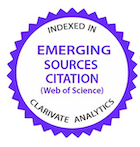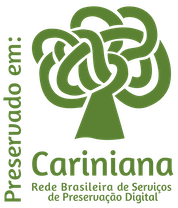Composição corporal de linhagens de tilápia do nilo (Oreochromis niloticus) em diferentes classes de comprimento
DOI:
https://doi.org/10.5216/cab.v13i4.6226Palavras-chave:
Tailandesa, GIFT, composição química, proteínas, lipídiosResumo
Objetivou-se avaliar a composição corporal de tilápias do Nilo em diferentes classes de comprimento da linhagem Tailandesa e de uma linhagem comercial, produzida a partir do programa GIFT (Genetically Improved Farmed Tilapia), quanto aos teores de umidade, proteína bruta, extrato etéreo, cinzas e energia. Os peixes foram cultivados em tanques-rede, em uma represa em Presidente Prudente, SP, Brasil. Com o crescimento, peixes coletados aleatoriamente de cada linhagem foram pesados e medidos em comprimento. A composição corporal mostrou diferenças entre as linhagens quanto à umidade, carboidratos e energia, com o crescimento dos peixes (P<0,05). O conteúdo de proteínas e cinzas foi semelhante nas linhagens, mas apenas o conteúdo de cinzas aumentou com o crescimento das tilápias. Observaram-se diminuição na porcentagem de umidade e aumento na porcentagem de extrato etéreo e no conteúdo energético nas maiores classes de comprimento. O crescimento diferenciado das linhagens de tilápias influencia as taxas metabólicas de mobilização, principalmente de água e extrato etéreo, alterando a dinâmica de deposição desses elementos e do conteúdo energético.
PALAVRAS-CHAVE: composição química; GIFT; lipídios; proteínas; Tailandesa.
Downloads
Downloads
Publicado
Como Citar
Edição
Seção
Licença
Copyright (c) 2012 Ciência Animal Brasileira / Brazilian Animal Science

Este trabalho está licenciado sob uma licença Creative Commons Attribution 4.0 International License.
Autores que publicam nesta revista concordam com os seguintes termos:
- Autores mantém os direitos autorais e concedem à revista o direito de primeira publicação, com o trabalho simultaneamente licenciado sob a Licença Creative Commons Attribution que permite o compartilhamento do trabalho com reconhecimento da autoria e publicação inicial nesta revista.
- Autores têm autorização para assumir contratos adicionais separadamente, para distribuição não-exclusiva da versão do trabalho publicada nesta revista (ex.: publicar em repositório institucional ou como capítulo de livro), com reconhecimento de autoria e publicação inicial nesta revista.
- Autores têm permissão e são estimulados a publicar e distribuir seu trabalho online (ex.: em repositórios institucionais ou na sua página pessoal) a qualquer ponto antes ou durante o processo editorial, já que isso pode gerar alterações produtivas, bem como aumentar o impacto e a citação do trabalho publicado (Veja O Efeito do Acesso Livre).






























